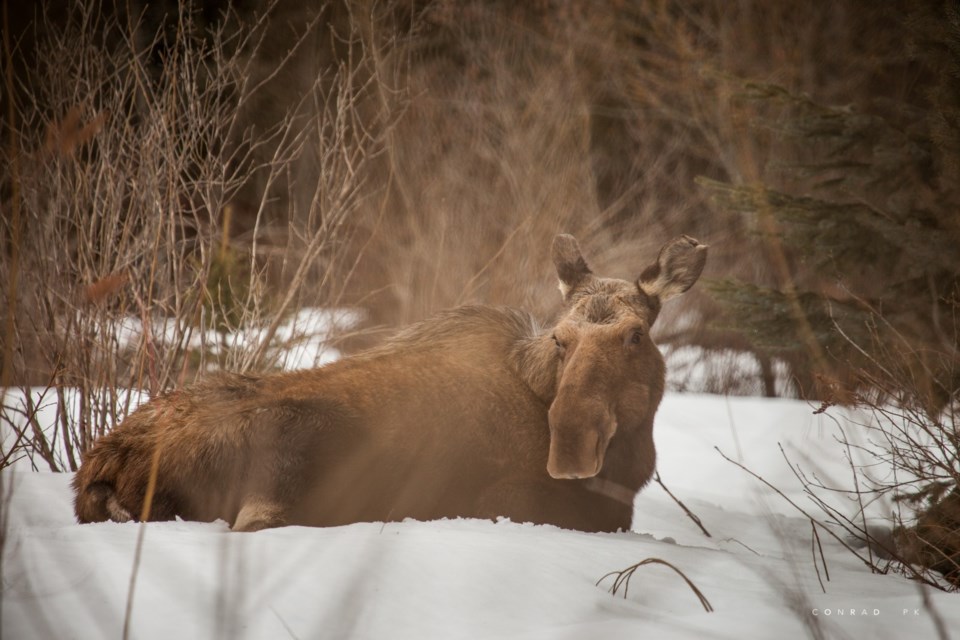T艥ilhqot’in Nation hunters with limited entry hunt (LEH) moose authorizations are being asked to stay home and forgo their moose hunt in T艥ilhqot’in territory this year.
The nation is requesting such hunters consider the impacts of their hunt on the local Indigenous population.
“In our lifetimes, moose populations have plummeted in the Chilcotin. Moose were once abundant, but in recent years T艥ilhqot’in hunters are reporting too few moose on the territory to feed their families and communities,” said Nits’il蕯in (Chief) Joe Alphonse.
Provincial statistics show B.C. has about 170,000 moose. More than 70 per cent live in northern British Columbia and the rest in the Cariboo-Chilcotin, Thompson-Okanagan, and Kootenay regions.
The nation said the province has doubled the number of moose allocations this year compared to 2021. That was done over the nation's objections, the nation said.
It said some Indigenous hunters have chosen not to hunt moose in order to maintain stock for future generations.
“Our households are predominantly low-income, meaning a nearby food source is not only a constitutionally protected Aboriginal right, but also an absolute necessity for healthy living,” Alphonse said. “Now is not the time for LEH hunters to come here. We need to protect our food sources to protect our families and communities.”
He cited a lack of consultation by the provincial government.
“A lot of our moose habitat has not recovered from the 2017 wildfires,” Alphonse said. “Upwards of 80 per cent of some of these areas have burnt and the large scale impacts of wildfire has not been resolved. Moose do not have the protection like they did before wildfire and extensive logging.”
In a statement to Glacier Media, the Ministry of Forests said it recognizes the important place wildlife holds in First Nations culture and that it works collaboratively with Indigenous governments to find common ground.
"The wildlife allocations for licensed hunters for 2022 take into account input from local First Nations, Indigenous knowledge and western science," the ministry said. "We regret that despite significant engagement since September of 2020 we were unable to achieve consensus with the Tsilhqot'in National Government on the 2022 licensed hunting season."
The ministry's 2022-23 synopsis said LEH is a service by which hunting authorizations are awarded to resident hunters based on a lottery or random draw. The purpose is to achieve wildlife management objectives and maintain hunting opportunity.
LEH seasons are introduced where it has become necessary to limit the number of hunters or limit the number, class or sex of animals that may be harvested.
The following species of game are available under LEH within certain areas of the province:
- bison
- black bear
- caribou
- elk
- moose
- mountain goat
- mountain sheep
- deer; and
- turkey.
The nation is part of the province’s Cariboo region for issuing LEHs.
The synopsis lists a tentative number of moose hunting authorizations for September through December for four cows or calves and 3,690 bulls.
For the main draw in 2021, the Fish and Wildlife Branch processed 162,447 applications and issued 17,932 authorizations for nine species.
The ministry said while authorizations and harvest for 2022 are higher than last year, the 2021 licensed harvest level was heavily reduced in response to uncertainty associated to the catastrophic wildfires and information from First Nations regarding harvest success.
The ministry said that, based on both western science and Indigenous knowledge, the moose population is approximately the same as it was in 2017. This year’s LEH authorizations are 45 per cent below the 2017 level, according to the ministry.
"The management of licensed harvest in the region is managed very conservatively and is only one part of the puzzle with respect to wildlife management," the ministry said. "Habitat, access management and broader objective setting are all critical aspects of our shared success in achieving wildlife management goals."



